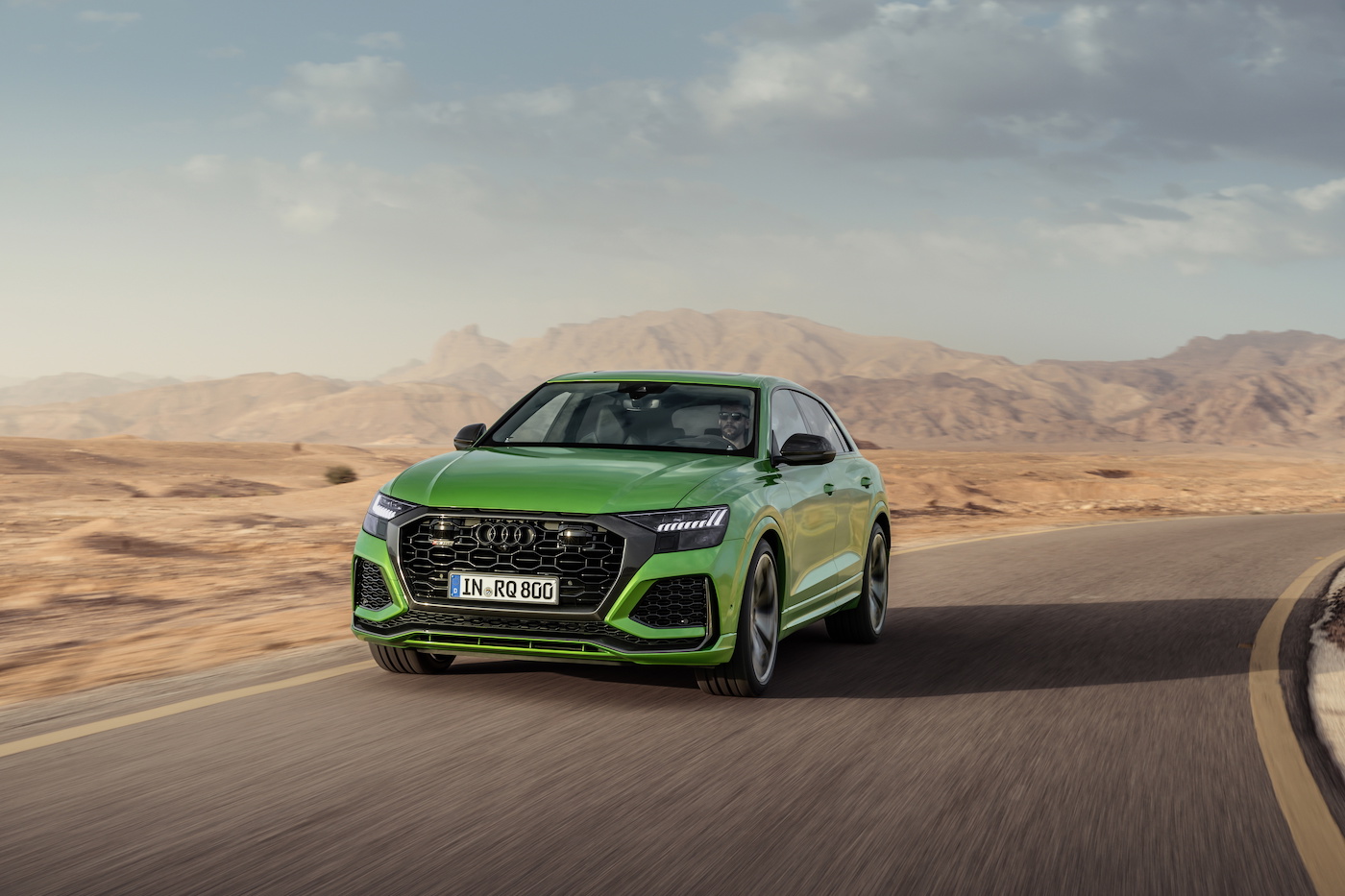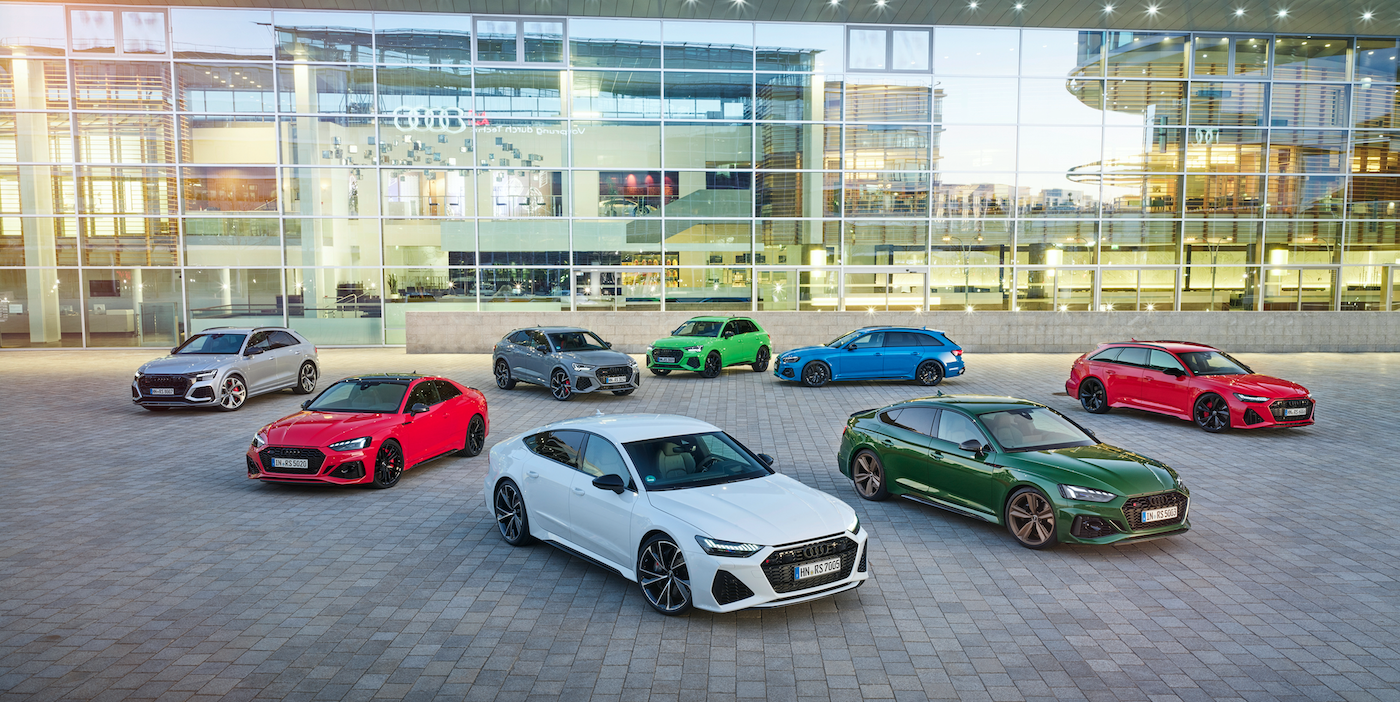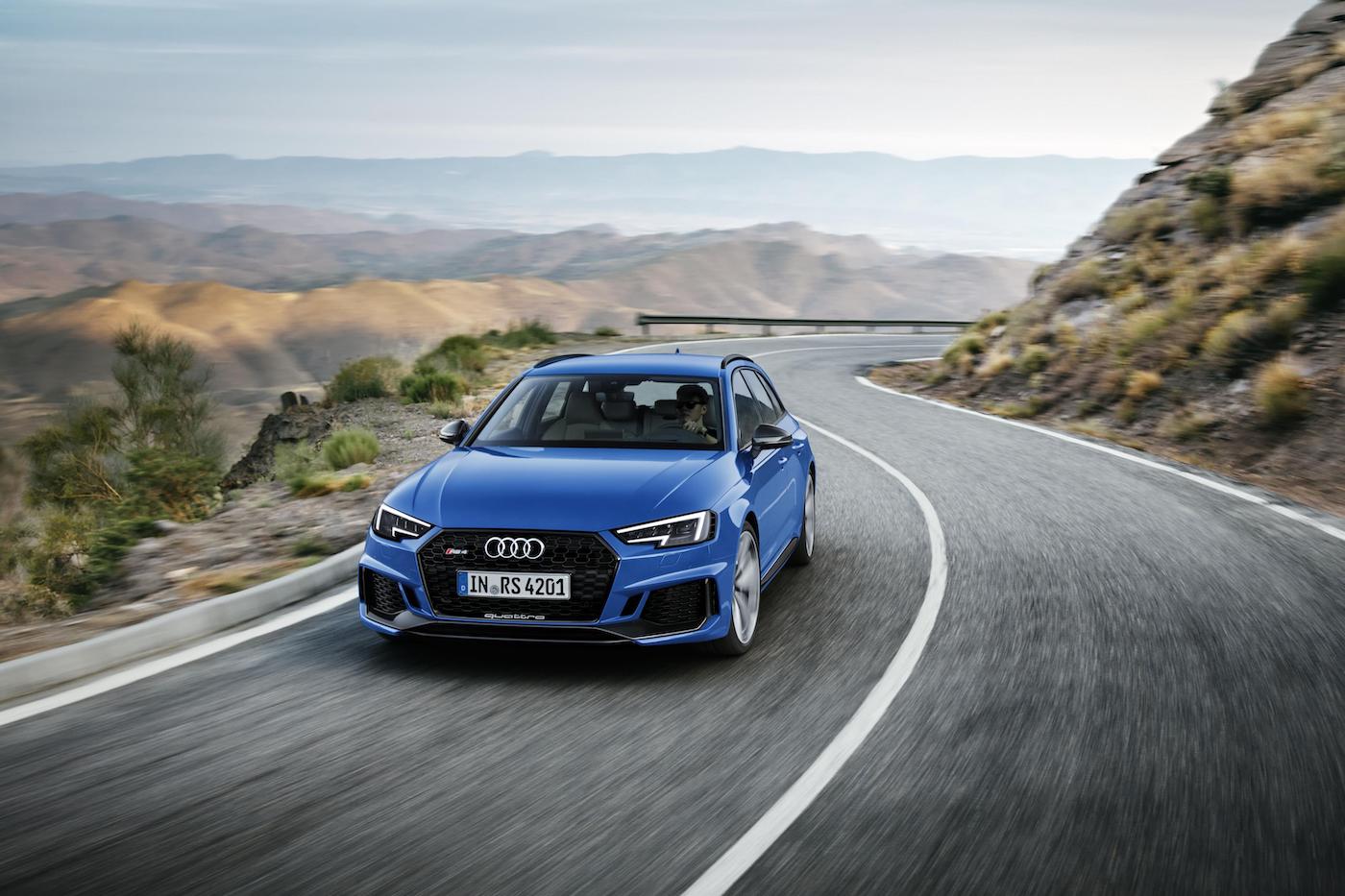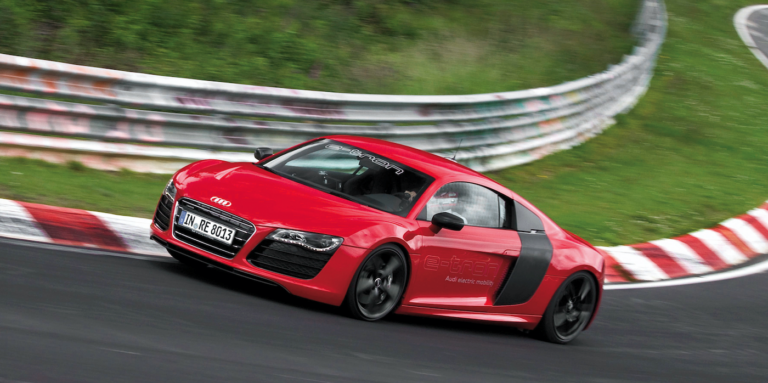The flagship Audi RS models take dynamically capable cars and add thrills and performance, to create a distinctive character. This character isn’t achieved by simply turning up the power; it is the result of the development and test engineers at Audi Sport GmbH focusing on the performance potential of every minute detail of each model and evaluating and refining the results during test drives all over the world. Let’s take a look behind the scenes at how the teams make an Audi into an RS…
As one would expect, the North Loop (Nordschleife) of the Nürburgring is a familiar workplace for the RS engineering teams. This 20.832km (12.94 mile) course is one of the most challenging in the world – it is known as the “Green Hell” for good reason – with the dynamics experts paying particular attention to the suspension compression at the Fuchsröhre, the kickbacks at the Karussell, and the jump at the Pflanzgarten. The team drive more than 80% of the course at full power, and with maximum loads applied at high speeds, every kilometre on this course equates to multiple kilometres of regular road driving: indeed 8,000km (4,970 miles) of endurance testing on the North Loop easily equates to a car’s entire lifetime. If the vehicle setup can survive this punishment, then it can certainly survive most of the world’s roads.
The North Loop is great for durability work, but its huge range of corners and surfaces also create a huge amount of information for the dynamics team, from handling to ride quality, to controllability and predictability at the limit.
Meet a North Loop expert
The Audi Sport team are all familiar with the Nordschleife’s 170 corners, but perhaps none more so than Frank Stippler, who is quite an asset to the team as his accomplishments include winning the 24 Hours races of Spa in 2012 and the Nürburgring (2012 and 2019). The 45-year-old was born in Cologne and lives locally in the Eifel region. He has been part of the team since 2009, when the Audi R8 LMS GT3 racing car debuted.
There is no denying Stippler’s driving skills, but his engineering expertise is also important for developing RS models, as well as the R8 supercar, including a VDI favourite: the V10 RWD model with rear-wheel drive.
In autumn 2019 Stippler smashed a Nordschleife lap time by 12 seconds. This time was achieved in the standard SUV category, when he drove an RS Q8 around the North Loop in 7 minutes and 42.253 seconds. While the record was not the aim of the development work, it proved the dynamic capabilities of the performance Q8 – including its 23in wheels.

Meet the boss
“The North Loop represents the ultimate endurance test in our development and coordination work,” states Oliver Hoffmann, managing director of Audi Sport GmbH. “Every RS model undergoes at least 8,000km of testing here. The track provides us with detailed information about the durability of our parts under extreme conditions and specifics about the suspension. With the RS Q8, our main focus was on the setup of the springs, dampers and the ESP, as well as the performance characteristics of the roll stabilisation and the sport differential.”
So what makes a Q8 into an RS Q8? Hoffmann explains: “RS vehicles have a strong and unique character: spontaneous maximum performance wherever and whenever desired, and effortless performance on long journeys. An RS is a true Dr Jekyll and Mr Hyde. It is important for every kilometre, no matter how it is driven, to be an experience,” adds Hoffmann, who is also responsible for technical development at the Neckarsulm site, where the RS models are built.
Twelve models to develop
The RS Q8 is just one of 12 models in the portfolio of Audi’s performance subsidiary, which also includes the RS 3 Sportback and Saloon, the RS 4 Avant, the RS 5 Coupé and Sportback, the RS 6 Avant, the RS 7 Sportback, the TT RS Coupé and Roadster, the RS Q3 and the RS Q3 Sportback. Eight of these models were introduced in 2019, and the engineering and development team at Audi Sport has ideas for the near future.

Key to these plans is creating an even closer relationship with Audi’s main design and engineering teams. Future RS models will be added the range sooner after the launch of the respective base product lines, which means that their characteristics will be defined at a very early stage and that their development will run alongside work on Audi AG’s models. In addition to design, this work will focus on the enhancements to powertrain and suspension that create an RS variant.
The work also includes ‘green’ engineering at the Green Hell, as the RS 6 Avant, RS 7 Sportback and RS Q8 include a sophisticated mild hybrid system based on the 48-volt on-board electrical system, as well as cylinder deactivation (COD) in the V8 TFSI engine under partial load. These functions will be carried over into the RS variants, but with a little fine-tuning.
“A unique character will only evolve if we work consistently and with great precision. A lot of experience and a clear vision are the keys to creating a coherent overall concept,” says Hoffmann.

30 laps of the world
For the RS Q8 alone, the test engineers from Audi Sport spent around two years on the road, covering more than 1.2 million kilometres in development vehicles and prototypes, the equivalent of driving around the world 30 times. The test drives took them to Finland, Sweden, France, Italy, South Africa, China, and the USA, on all types of racing tracks and roads.
For example, the high-speed circular track at Nardò in southern Italy was used to test the resilience of all components at consistently high speeds, while the ice and snow in Scandinavia offered ideal conditions for refining the response characteristics of the suspension and control systems. The heat and elevation in South Africa then presented challenges for the air conditioning, engine cooling, and performance characteristics.
A ‘two-digit’ number of RS 6 Avants and RS 7 Sportbacks are built in Neckarsulm every working day, but the Audi Sport team’s work doesn’t end there, as each car is checked on a road course before being handed over to the customer.





